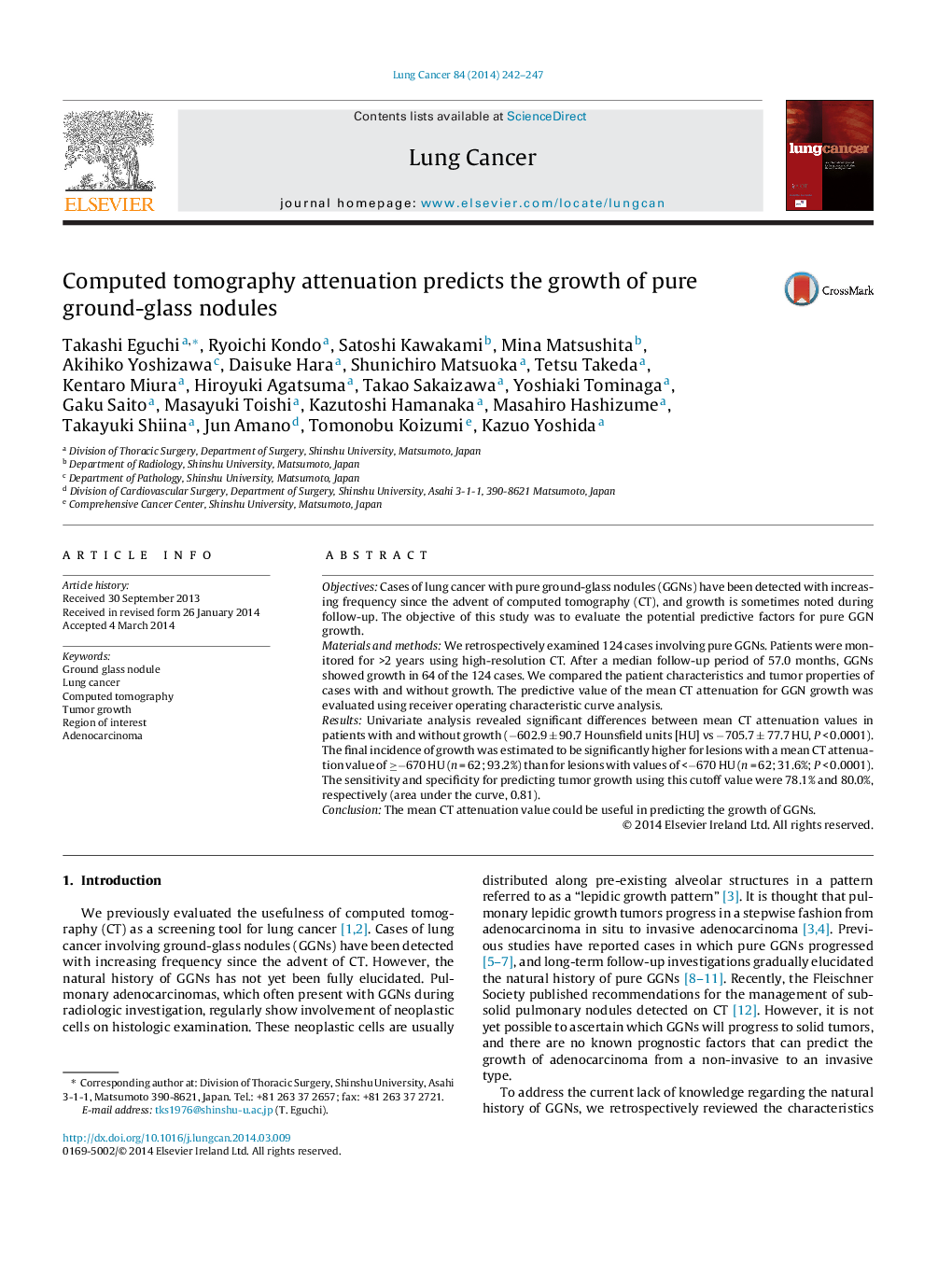| Article ID | Journal | Published Year | Pages | File Type |
|---|---|---|---|---|
| 2140878 | Lung Cancer | 2014 | 6 Pages |
ObjectivesCases of lung cancer with pure ground-glass nodules (GGNs) have been detected with increasing frequency since the advent of computed tomography (CT), and growth is sometimes noted during follow-up. The objective of this study was to evaluate the potential predictive factors for pure GGN growth.Materials and methodsWe retrospectively examined 124 cases involving pure GGNs. Patients were monitored for >2 years using high-resolution CT. After a median follow-up period of 57.0 months, GGNs showed growth in 64 of the 124 cases. We compared the patient characteristics and tumor properties of cases with and without growth. The predictive value of the mean CT attenuation for GGN growth was evaluated using receiver operating characteristic curve analysis.ResultsUnivariate analysis revealed significant differences between mean CT attenuation values in patients with and without growth (−602.9 ± 90.7 Hounsfield units [HU] vs −705.7 ± 77.7 HU, P < 0.0001). The final incidence of growth was estimated to be significantly higher for lesions with a mean CT attenuation value of ≥−670 HU (n = 62; 93.2%) than for lesions with values of <−670 HU (n = 62; 31.6%; P < 0.0001). The sensitivity and specificity for predicting tumor growth using this cutoff value were 78.1% and 80.0%, respectively (area under the curve, 0.81).ConclusionThe mean CT attenuation value could be useful in predicting the growth of GGNs.
